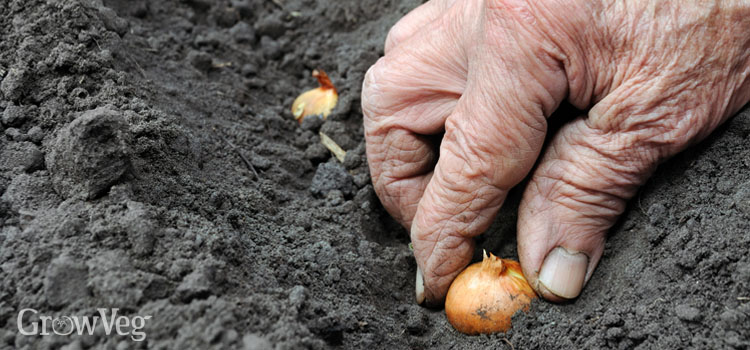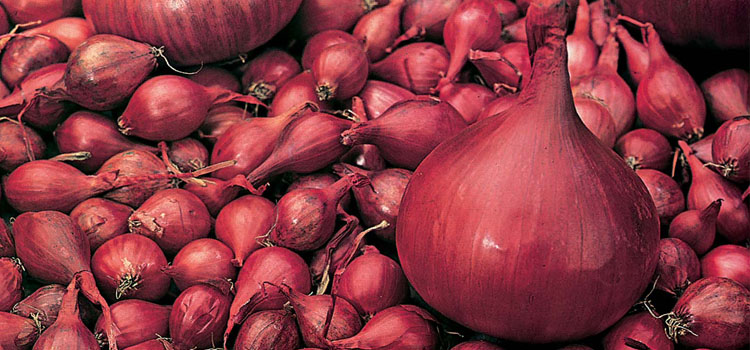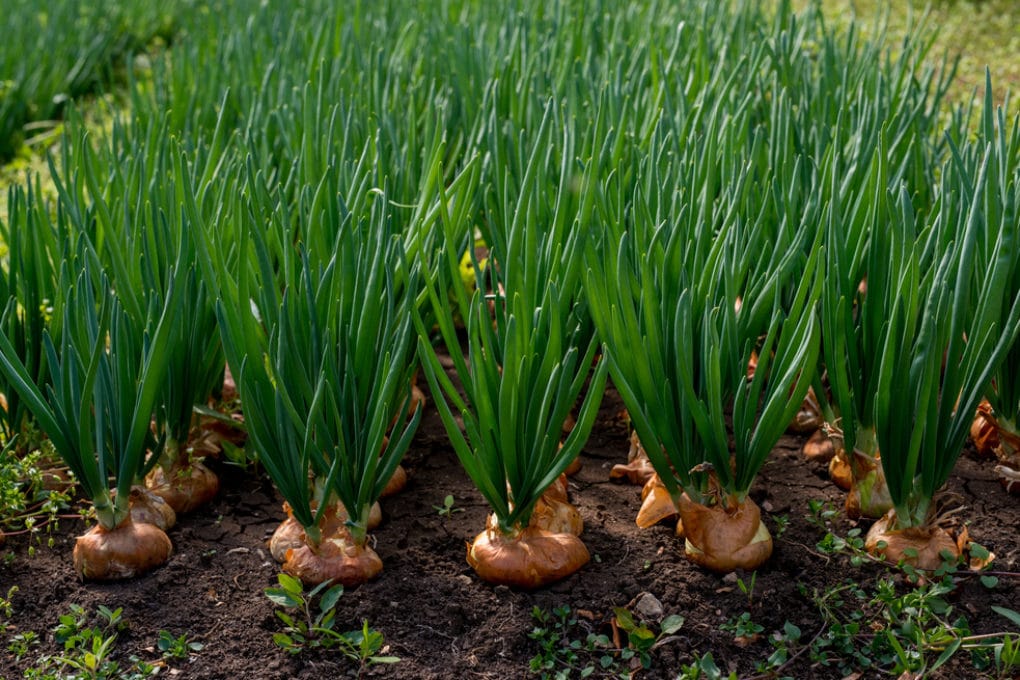Today’s onions are grown just about anywhere it rains – i. e. in most places! They’re definitely high on my list of must-have crops because they’re almost always a reliable staple. Onions will also do their thing for you if you can find a spot on the plot that gets lots of sun and has rich, free-draining soil.
As an avid gardener, I’m always looking for ways to extend my growing season and maximize yields from my small backyard plot That’s why I was so excited to discover that many types of onions can be planted in the fall for an early summer harvest the next year!
In this article I’ll share everything I’ve learned about the best practices for fall onion planting. Read on to learn all about
- Why planting onions in fall works
- Timing fall planting correctly
- Choosing the right onion varieties
- Preparing beds and planting properly
- Caring for onions over winter
I’ll also answer some common questions about growing onions in the fall. By the end, you’ll have all the knowledge you need to add fall-planted onions to your own vegetable garden!
Why Plant Onions in the Fall?
Onions are incredibly versatile culinary staples that store well, so they are certainly worth finding space for in the garden. Many types can be planted in fall and allowed to overwinter for a super early summer harvest. Here are some of the main advantages of fall onion planting
- Earlier harvests – Onions planted in fall and wintered over will be ready to start harvesting up to 1 month sooner than spring plantings.
- Larger bulbs – The longer growth period allows fall-planted onions more time to swell into large, juicy bulbs.
- Less maintenance – Since onions are growing over winter, there’s less need for weeding, watering, and fertilizing.
- Soil prep done – Planting in freshly tilled garden beds already prepped for other crops saves time.
- Fewer pest issues – Onion maggots and thrips, two common onion pests, are less prevalent in cooler weather.
If you have space, planting a portion of your onions in autumn makes excellent use of your garden real estate!
Timing Matters – When to Plant Fall Onions
Timing is important when it comes to fall onion planting. You’ll want to plant them 4-6 weeks before your average first fall frost date. This gives them enough time to establish roots before growth shuts down for winter.
In most zones, aim to get onion sets or transplants into the ground in late September to late October. If you’re not sure of your average frost date, you can look it up by zip code here:
Onions can withstand quite cold temperatures, even a few degrees below freezing. However, it’s best to provide some protection if extended freezes below 20°F are expected in your area by mulching heavily.
In zones 6 and up, you can sometimes succesfully plant into early November. In zones 1-5, it’s risky to plant much beyond October. Listen to the weather forecast and your gut!
Choose the Right Onion Varieties for Fall Planting
While most onion varieties can be planted in spring, not all do well when fall planted. Choose varieties described as good for overwintering or specifically for autumn planting.
Here are some top types that thrive when planted in the fall:
- Yellow – Copra, Bridger, Golden Bear
- White – White Wing, Snow White
- Red – Red Wing, Red Burgundy
Within each color, look for varieties dubbed “long day” onions. These need the longer daylight hours of spring and summer to bulb up, making them perfect candidates for fall planting.
Avoid short-day varieties like Vidalia or Texas 1015s that only produce bulbs with 10-12 hours of sun – they may bolt in spring before making a bulb if fall planted.
I also recommend ordering onion sets or transplants over seeds – they establish much more readily in autumn.
Preparing Beds and Planting Properly
Since onions have shallow roots, it’s important to prepare a smooth, weed-free, and loamy planting area for your fall crop. Follow these tips:
- Work in 1-2 inches of compost or well-rotted manure a few weeks before planting. This boosts organic matter.
- Rake beds smooth shortly before planting. Onions need firm soil, so eliminate large clumps or stones.
- Plant sets 1-2 inches deep and 4-6 inches apart in all directions. Closer spacing produces smaller bulbs.
- Consider mulching newly planted onions with grass clippings or straw. This conserves moisture and insulates.
- Water thoroughly after planting and continue doing so weekly if rain is lacking. Proper moisture is key!
It’s easy to plant too deep, so don’t bury those sets or seedlings more than 2 inches. Shallow is best! Add a nitrogen fertilizer at planting time and again in early spring once growth resumes.
Protecting and Caring for Fall Onions During Winter
Once snug in the ground, your onions need minimal care as they tough out winter. Here are a few tips:
- Add a 4+ inch insulating mulch layer in late fall after the ground freezes. Straw or leaves work great.
- Consider protective covers like low tunnels or cloches if you face very harsh winters.
- Perforate plastic covers or remove fleece on sunny winter days to prevent overheating.
- Remove mulch in early spring to allow soil to warm. Loosen soil if compacted.
- Weed early and often once spring growth starts. Weeds will compete for nutrients and water.
- Water spring onions weekly if rain is lacking. Consistent moisture is vital for plumping bulbs.
The biggest threats to fall onions are extreme cold and fluctuating freeze/thaw cycles which can heave plants from the ground. Choose hardy varieties and protect with ample mulch!
FAQs About Planting Onion Sets in Fall
Here are answers to some common questions about growing onions in the fall season:
What zones can plant onions in fall?
Most zones 3-10 can succesfully plant onions in fall, though extra protection may be needed in colder regions. Zone 1-2 gardeners should wait for spring.
Do onions need full sun for fall planting?
Yes, choose a spot that gets a minimum of 6-8 hours of direct sun daily. Morning sun is preferable to afternoon.
How long do fall-planted onions take to mature?
Onions planted in fall and wintered over will be ready for harvest in early-to-mid summer, up to 4 weeks before spring plantings.
Should you fertilize fall onions?
Yes, use a balanced vegetable fertilizer when planting in fall and again in early spring when growth resumes.
What if my fall onions start growing in winter?
Some new growth during warm spells is fine, but try to prevent excessive growth by keeping them cool. Growth uses up stored energy.
Grow Bigger, Better Bulbs By Planting in Fall
I hope these tips have shown that planting onions in the fall can help boost yields from this versatile vegetable. Take advantage of your garden’s dormant season by tucking some onion sets into freshly prepped beds this autumn!
With the right timing, variety selection, planting techniques, and overwintering care, you can enjoy an earlier, low maintenance onion harvest. Don’t let that garden space sit idle – fill it with onions this fall.
Set to it with Onion Sets
You can grow onions from seeds, but it’s much easier to start them from “sets,” which are small bulbs. Sets are just young onions that have been grown commercially and then dried to stop their growth before being sold to people like you and me. The tiny bulbs are usually no more than 2cm (1in) wide, and they are guaranteed to be virus-free, so you know you’re getting a reliable, happy product. Plant sets, and you won’t have to deal with strange germination—my springtime sets got a 99 five percent success rate (yes, one of the 2020 plants I stubbornly planted failed to sprout, denying me the satisfaction of a perfect strike rate).
Even though it might seem like spring is the best time to start growing onions, fall is also a good time. When planted at this time of year, the tiny bulbs quickly set roots and get ready for winter, when they will be ready to take off even earlier in the spring. Autumn-planted sets can yield their pungent haul by early summer, often a full month earlier than spring-planted sets. If you’re an onion obsessive like me you’ll appreciate that this is very good news indeed.

Fall-planted sets follow seamlessly on from summer crops. Plant potatoes here if you grew potatoes this season. The soil will have been well prepared for this crop and should be mostly free of weeds. Just a week before you plate, rake in some all-purpose fertilizer to give the soil extra nutrients. Growmore or blood, fish, and bone works great. If it’s been very dry where you are, soak the ground really well. You want to get the sets going as soon as possible.
Onions prefer quite a firm soil, which is where a rather eccentric cultivation technique comes into play. Just before planting, shuffle up and down the onion bed, taking baby steps to push down the soil. Some people might find this step (or steps) in the process strange, but it is necessary to make sure that the soil’s crumb structure is packed down so that the roots have the support they need.
Plant your sets about 2 cm (1 in) deep, so that only the very top of each one sticks out of the ground. Space each one 7-10cm (3-4in) apart in rows 30cm (12in) distant. Birds often eat the papery tips thinking they are tasty treats, pulling up the sets as they try to catch what they think is a juicy worm. One way to avoid set tips is to carefully cut them off down to the shoulder of the miniature bulb before planting. Set tips are just the old leaves of an immature plant. Once your sets are in place, keep the ground clean by pulling weeds by hand so that you don’t hurt or uproot the potatoes.
Extreme cold will kill off overwintering sets. This is a shame because it means that only people who live in milder climates can plant in the fall. People in USDA zones five and below will have to wait until spring to plant the usual way, when the soil is ready to work with. Also, British gardeners have a lot of options when it comes to sets for planting in the fall. In North America, on the other hand, people don’t have as many options, but you can often find young seedlings for sale instead.

Not all onions are suitable for fall planting, either, so be guided by the variety’s description. “Electric,” a beautiful red onion with flesh that is almost pink, and “Senshyu Yellow,” a Japanese type with a slightly flattened shape, are two of my favorites. Of course, there are plenty more out there. Putting something into the ground to get ready for next year’s harvest is fun to do while everything else is closing down for the winter.
Plants Related to this Article
If you need help designing your vegetable garden, try our Vegetable Garden Planner.
Planting Onion Bulbs: A Complete Guide From Start To Finish
- The Ultimate Guide to Growing Strawberries in Raised Beds - August 8, 2025
- No-Dig Garden Beds: The Easiest Way to Grow a Beautiful Garden - August 6, 2025
- How to Protect and Preserve Wood for Raised Garden Beds - August 6, 2025

